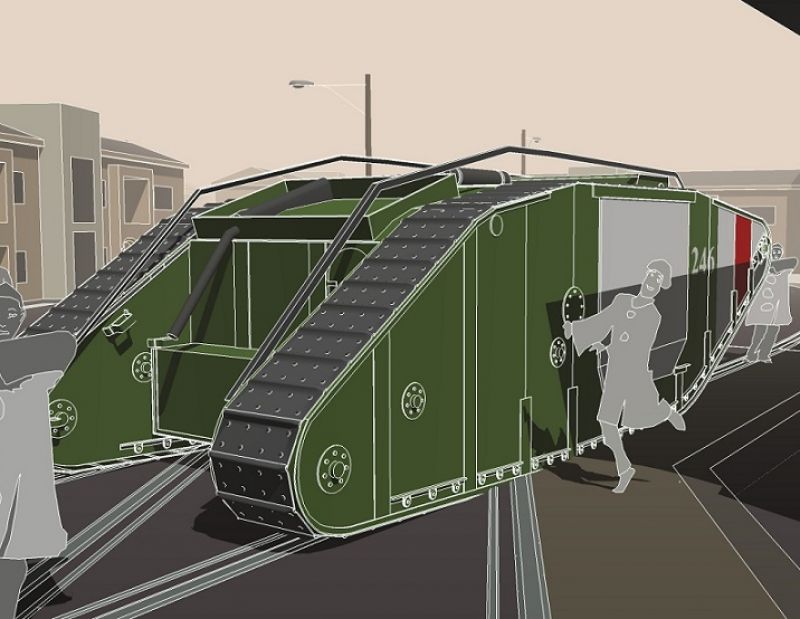
First World War Tank Tram to tour Greater Manchester
Tuesday 31 May 2016
Engineers and performers from the University of Salford are coming together to recreate a little known piece of British history.
Engineering students are reconstructing a First World War‘tank tram’ – a tram designed to look like a tank which was paraded throughBritish streets to raise money for the war effort 100 years ago – which will betaken on a tour of Greater Manchester this autumn.
Meanwhile, performance students are working with theatremaker Carran Waterfield to recreate some of the surprising ways in which tankcrews kept themselves entertained on the front line – dressing as clowns toperform comical sketches parodying figures of the time, from the Kaiser to thesuffragettes.
Now, a special event showcasing the project, called Albertthe Tank Tram: A Work in Progress, will be held at the University’s MediaCityUKcampus from 12-4pm on Wednesday June 1.
The original tank trams were used as publicity stunts topromote the sale of war bonds which would pay for the British government tobuild tanks – first used in the Battle of the Somme in 1916.
Engineering students from the University have now beenworking with the Tank Tram Society and Manchester Tramway Museum Society tobuild a replica of one of these creations, funded by the Heritage Lottery Fund,and they have held workshops with young people from across the region, who haveprovided input into how the finished product should look.
Their recreation – Albert the Tank Tram – will be completedin the autumn when it will visit Salford Museum and Art Gallery, the Museum ofWigan Life and other locations across Greater Manchester, accompanied by theperformances, before it finds a permanent home at the Transport Museum inHeaton Park.
The MediaCityUK event will feature photographs of the workin progress, an animation of how the finished product will look and a series ofperformances.
The event will also feature talks by Professor AlaricSearle, University of Salford military historian, on the British public’sresponse to the introduction of tanks, as well as by Louise Page, a lecturer inplaywriting at the University, who has worked on this summer’s Green FieldsBeyond project in Lincoln, where the First World War tanks were built.
The event is coming to Salford Quays as part of the CreateSalford festival, which showcases the best work of the School of Arts and Mediaand celebrates the University’s close links with the creative industries.
The festival, now in its fifth year and extended to takeplace over two months, has also included events such as a fashion runway showat Hotel Football, music and comedy performances and exhibitions of visual artpieces.
Richard Talbot, University of Salford senior lecturer inperformance, said: “Tank trams were a fascinating aspect of the First World Warand it’s very difficult for people today to understand how – at a time whensoldiers were being killed in huge numbers – members of the public werespending huge amounts of money to buy bonds to pay for tanks which they thoughtwould be the answer.
“At the same time, we’ve been researching this piece ofhistory and were surprised to find an image of a tank crew dressed as Pierrots– a popular form of entertainment at the time – and prisoners dressed asclowns, and we’ve turned this idea into a series of performances. This will bea fascinating exhibit when it goes on tour later in the year, and this eventwill provide an interesting preview.”
Find out more
Conrad Astley





